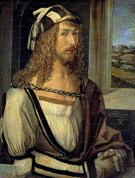Art, Art History and Design, School of

School of Art, Art History, and Design: Faculty Publications and Creative Activity
Document Type
Article
Date of this Version
2003
Abstract
Sebald Beham from Nuremberg designed his Spinning Bee woodcut around 1524 (Figure 1) as a medium-sized work of approximately 1 ft by 1.5 ft, printed on two sheets of paper glued side by side. A large number of individuals are included and most are women, significantly so because spinning bees served as meeting places for rural girls and women where they would spin and amuse themselves during the fall and winter evenings. Beham’s print is the first surviving example of a spinning bee in visual art and one of the first substantive examples of the theme in any form. The print thus began a tradition in the visual arts and followed one in literature that continued through the eighteenth century with German poems and prints, including an engraved copy of Beham’s Spinning Bee with text.
In Beham’s print only two of the women spin: the woman whose distaff stands out prominently at center, and an older woman at lower left, who is probably married, judging from her matron’s bonnet. Each of these women holds yarn she has spun from the raw wool or flax on a long distaff. The older woman also holds a spindle, a long bobbin-like weight that helps turn the distaff in its base. The remaining women and men eat and drink, dance, and are engaged in a variety of sexual antics in which the men embrace or lie on the women (at upper right), look under their skirts (at lower right), and reach aggressively under their clothing (lower left). Sebald Beham seems to offer the viewer a tantalizingly exaggerated picture of the kind of Early Modern German spinning bee Hans Medick broadly describes as a “youth-sexual culture” showing “rural customs of courtship.”
My purpose in this essay is to examine the sexualized view of women Beham presents in this print. Most of the women are depicted as sexually involved and, I argue, therefore misbehaving, while only two women attend to their distaffs and are thereby shown to be virtuous. I intend to discuss these contradictory attitudes about women, as virtuous and sexual, by placing them within the broader context of attitudes in Nuremberg. The results show that Beham’s microscopic view of one group of Nuremberg women telescopes into more general attitudes toward women during Late Medieval and Early Modern Europe.


Comments
Published (as Chapter 6) in Saints, Sinners, and Sisters: Gender and Northern Art in Medieval and Early Modern Europe, edited by Jane L. Carroll and Alison G. Stewart (Aldershot: Ashgate, 2003), pp. 127–154. Copyright © 2003 Jane L. Carroll and Alison G. Stewart. Used by permission.